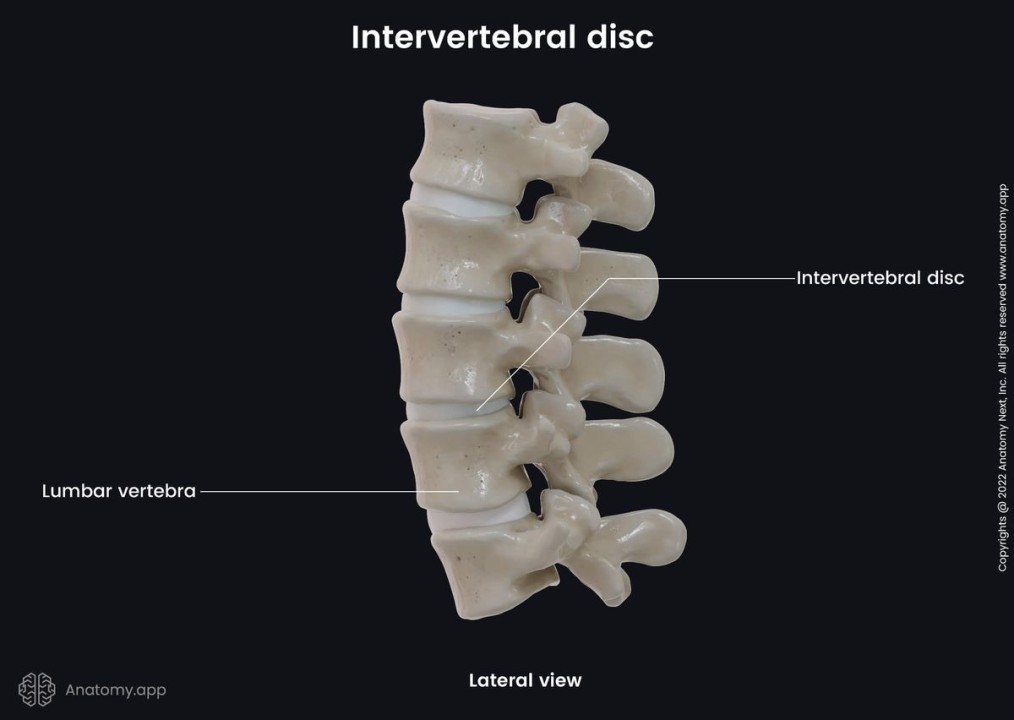
Intervertebral Disk : Biomechanical Perspective
Healthy intervertebral discs in an adult account for approximately one-fourth of the height of the spine. When the trunk is erect.
The intervertebral disc IVDs incorporates three functional structures (fig1) :

- A peripheral annulus fibrosus (AF) : a thick outer layers of collagen fibres surrounds a central gelatinous material known as the nucleus pulposus .
- A central nucleus pulposus (NP) : a colloidal gel-like structure with a high fluid content, located at the center of IVD
- Two vertebral endplates (VEPs) : An upper and a lower cartilaginous endplate cover the superior and inferior aspects of the disc. The endplate permits diffusion and provides the main source of nutrition for the disc.

Mechanically, the annulus acts as a coiled spring whose tension holds the vertebral bodies together against the resistance of the nucleus pulposus, and the nucleus pulposus acts like a ball bearing composed of an incompressible gel.
During flexion and extension, the vertebral bodies roll over the nucleus while the facet joints guide the movements.
During daily activities, compression is the most common form of loading on the spine.
When a disc is loaded in compression, it tends to simultaneously lose water and absorb sodium and potassium until its internal electrolyte concentration is sufficient to prevent further water loss .
Additionally, there is a “pump action” at every disc level of the spine. This pumping mechanism creates a suction to pull food and nutrition into the disc (proteoglycans) and squeezes the disc in order to push the waste out of the disc.

Sources :
Basic Biomechanics 6th Edition - Susan J. Hall, Ph.D.
https://www.ncbi.nlm.nih.gov/pmc/articles/PMC6535390/